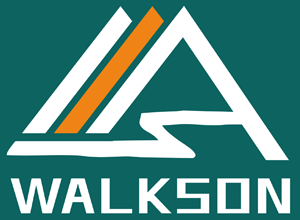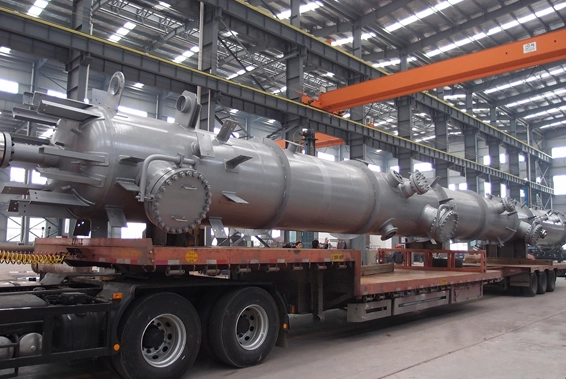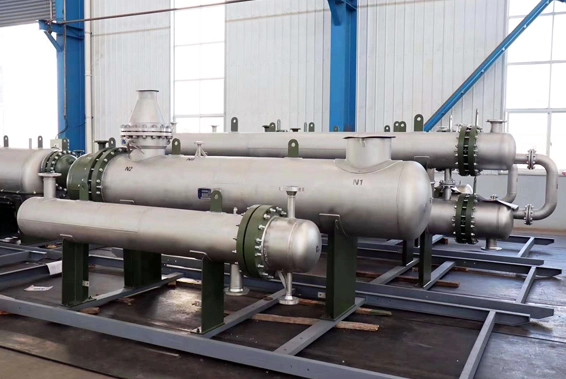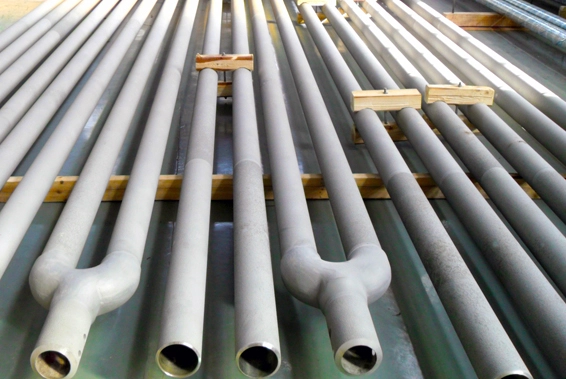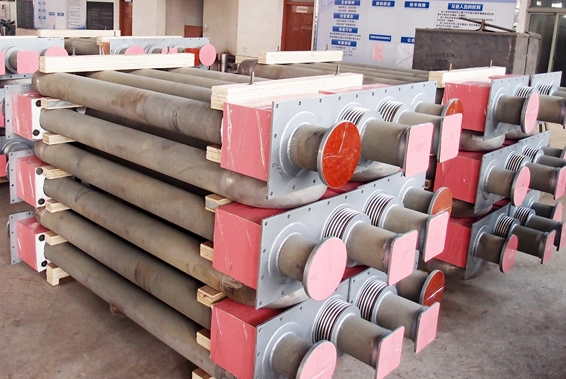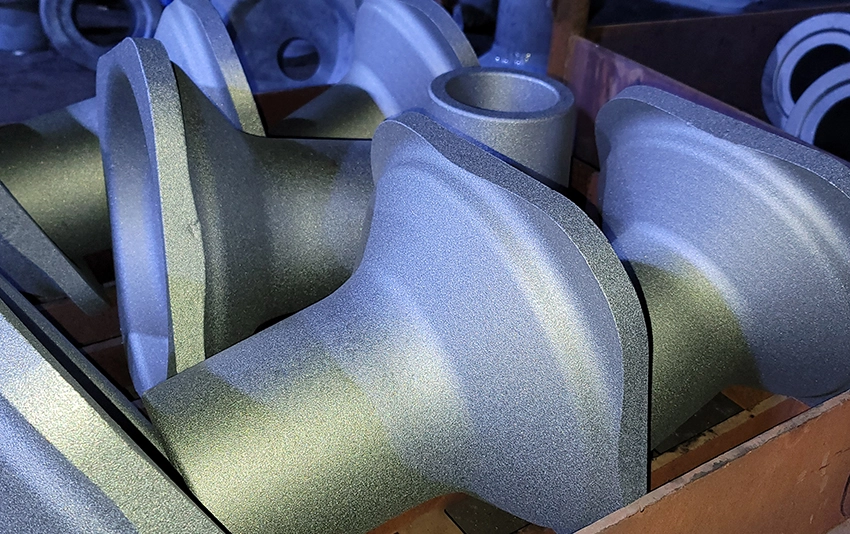Product Application: Centrifugal Cast Pipe Joints in Heavy Industrial Equipment
Centrifugal cast pipe joints are critical components in heavy industrial equipment, providing secure connections for piping systems handling high-pressure fluids and gases. WALKSON’s pipe joints are designed for the following applications:
· Petrochemical Industry:
Hydrogen Reformers and Catalytic Cracking Furnaces: Joints connect pipes in high-pressure systems, operating at temperatures up to 850°C and resisting corrosive hydrocarbons.
Styrene Steam Superheaters: Ensure leak-free connections in steam-intensive processes, withstanding thermal cycling and aggressive chemical environments.
· Oil Refining Industry:
Atmospheric-Vacuum Distillation Units: Facilitate high-pressure crude oil flow, maintaining integrity under corrosive conditions and pressures up to 80 bar.
EDC Cracking Furnaces: Support reliable piping connections in chlorinated hydrocarbon environments, resisting corrosion and erosion.
· Metallurgical Industry:
Cold Rolling Continuous Annealing Lines: Joints link radiant tubes and burners, enduring high-temperature gases and mechanical stress.
Rotary Hearth Furnaces: Connect piping in screw discharging systems, resisting abrasive residues and extreme heat.
· Additional Applications:
Pressure vessels, heat exchangers, and towers in large refining projects, where joints ensure robust performance in demanding industrial systems.
These pipe joints are engineered to perform in harsh environments, including temperatures up to 900°C, pressures up to 80 bar, and exposure to corrosive and abrasive media, delivering exceptional durability for heavy industrial equipment.
Functions of WALKSON Centrifugal Cast Pipe Joints
WALKSON’s centrifugal cast pipe joints provide essential functionality in heavy industrial equipment:
· Secure Piping Connections: Precision-crafted joints ensure leak-free, high-strength connections, maintaining system integrity under extreme pressures.
· High-Temperature Endurance: Made from high alloy and nickel-based materials (e.g., Inconel 600, Hastelloy C276, HP alloys), joints withstand prolonged exposure to intense heat.
· Corrosion and Abrasion Resistance: Nickel-based alloys protect against sulfidation, carburization, and erosive wear, ensuring long-term reliability in harsh environments.
· Mechanical Stability: The centrifugal casting process creates a dense, uniform microstructure, enhancing creep resistance and structural strength.
· Tailored Designs: Available in various configurations (e.g., couplings, reducers, tees), sizes, and connection types to meet specific equipment requirements.
Manufacturing Process: Precision and Standards Compliance
WALKSON’s centrifugal cast pipe joints are manufactured using advanced technology and strict adherence to international standards, reflecting our ISO 9001, ISO 14001, ISO 45001, and O/TSY 1002.1 certifications. Below is a comprehensive overview of the production stages, leveraging our expertise as a high-tech enterprise with 11 state invention patents, including centrifugal casting technology for Inconel 600:
1. Material Sourcing and Verification
· Standards: ASTM A351, ASTM A494, DIN EN 10295, and client-specific requirements.
· Materials: High alloy steels (e.g., HH, HK) and nickel-based alloys (e.g., Inconel 625, Hastelloy B2).
· Process: Materials are procured from certified vendors and analyzed for chemical composition per ASTM E350 to ensure alloy purity and compliance.
· Equipment: Advanced optical emission spectrometers for precise material analysis.
2. Melting and Alloy Refining
· Standards: ISO 9001 and ASME Section IX for melt quality assurance.
· Process: Alloys are melted in electric arc or induction furnaces, purified to eliminate impurities, and conditioned for uniform composition.
· Equipment: High-capacity electric arc furnaces (EAF) and vacuum induction melting systems.
· Quality Control: Melt samples are tested to meet ASTM E350 standards.
3. Centrifugal Casting
· Standards: ASTM A781, EN 12680, and API 934 for casting integrity.
· Process: Molten alloy is poured into a rotating mold designed for the joint’s geometry. Centrifugal force compacts the material, forming a dense, defect-free component with a refined microstructure. This process, refined through our collaboration with the Chinese Academy of Sciences, ensures superior quality.
· Equipment: Automated horizontal centrifugal casting machines with precise control over rotation and temperature.
· Benefits: Produces joints with exceptional strength, thermal stability, and accurate geometry.
4. Heat Treatment
· Standards: ASTM A703, ASME Section VIII, and client-defined protocols.
· Process: Joints undergo heat treatments like solution annealing or tempering to enhance creep resistance, toughness, and corrosion properties.
· Equipment: Programmable heat treatment furnaces with real-time monitoring.
· Quality Control: Thermal cycles are tracked to comply with ISO 9001 standards.
5. Machining and Finishing
· Standards: ISO 2768 for dimensional accuracy, ASME B16.9 for fittings, and ASTM A999 for surface quality.
· Process: Joints are machined to precise specifications using CNC equipment, with surface finishes optimized for performance. Threads, flanges, or welded connections are added as needed.
· Equipment: CNC milling machines, lathes, and polishing systems.
· Quality Control: Dimensional checks are performed using coordinate measuring machines (CMM).
6. Quality Control and Testing
WALKSON’s stringent testing protocols, supported by our comprehensive quality management system and partnerships with research universities, ensure joint reliability. We offer full transparency to clients and third-party inspectors (e.g., SGS, Bureau Veritas), with clients invited to witness all tests as outlined in our Inspection and Test Plan (ITP).
Non-Destructive Testing (NDT)
· 100% X-Ray Inspection:
Standard: ASTM E142, EN 12681.
Purpose: Detects internal flaws like voids, cracks, or inclusions.
Equipment: High-resolution digital X-ray systems.
Process: Full scanning of joints with detailed reporting of results.
· 100% Eddy Current Testing:
Standard: ASTM E309, EN 1971.
Purpose: Identifies surface and near-surface defects, such as micro-cracks or pitting.
Equipment: Multi-frequency eddy current testing units.
Process: Comprehensive surface testing for defect-free assurance.
· Ultrasonic Testing (UT):
Standard: ASTM A388, EN 12680.
Purpose: Verifies wall thickness consistency and internal integrity.
Equipment: Automated ultrasonic scanners with high-frequency probes.
Process: Full scanning to ensure structural compliance.
Destructive Testing (where applicable)
· Tensile Strength Testing:
Standard: ASTM E21.
Purpose: Evaluates strength and ductility under stress.
Equipment: High-capacity tensile testing machines.
· Creep Resistance Testing:
Standard: ASTM E292.
Purpose: Assesses performance under sustained high-temperature loads.
Equipment: Specialized creep testing ovens.
· Microstructure Analysis:
Standard: ASTM E1351.
Purpose: Verifies grain structure and material uniformity.
Equipment: Metallographic microscopes with digital imaging.
Hydraulic Pressure Testing
· Standard: ASME B31.3, API 934, and client requirements.
· Purpose: Confirms the joint’s ability to withstand design pressures (e.g., up to 80 bar for heavy industrial systems).
· Process: Joints are pressurized with water to 1.5 times the design pressure and held to check for leaks or deformation.
· Equipment: Automated hydraulic testing systems with digital pressure gauges.
· Client Witnessing: Clients or third-party inspectors are invited to observe testing for compliance verification.
Documentation
· Inspection and Test Plan (ITP): Detailed ITP outlines all inspection and testing phases, available for client review.
· Welding Procedure Specification (WPS) and Procedure Qualification Record (PQR): Pre-qualified per ASME Section IX for welded components, provided upon request.
· Material Test Reports (MTR): Issued per EN 10204 Type 3.1 or 3.2, documenting chemical, mechanical, and test data.
· Inspection Reports: Comprehensive records of NDT, pressure tests, and dimensional checks, certified by third-party inspectors if required.
· Reference List: Available to showcase WALKSON’s successful delivery of pipe joints to global refining and metallurgical projects.
Advantages of Choosing WALKSON
Choosing WALKSON for centrifugal cast pipe joints offers distinct advantages, positioning us as the preferred supplier for heavy industrial equipment:
1. Uncompromising Quality: Our joints meet stringent international standards, backed by 100% NDT and a robust quality management system certified to ISO 9001, ISO 14001, and ISO 45001.
2. Customized Engineering: Tailored joint designs, alloy formulations, and configurations to meet specific industrial equipment needs, leveraging our 11 state invention patents.
3. Global Trust: Trusted by industry leaders like SINOPEC, CNPC, and CNOOC, with a reference list highlighting successful deliveries to large refining and steel projects worldwide.
4. Transparent Processes: Third-party inspections (e.g., SGS, BV) and client-witnessed testing ensure trust and accountability.
5. Innovative Technology: Advanced centrifugal casting, CNC machining, and NDT systems, developed in collaboration with the Chinese Academy of Sciences, deliver precision and durability.
6. Expert Support: Our expert team, backed by our Academician Workstation, provides end-to-end guidance from design to installation.
7. Timely Delivery: Streamlined production and logistics ensure fast turnaround without compromising quality, supporting critical project timelines.
8. Sustainable Practices: Eco-friendly manufacturing aligns with ISO 14001 standards, minimizing environmental impact.
9. Cost Efficiency: Durable joints reduce maintenance and downtime, lowering long-term operational costs for refining and metallurgical plants.
Consult with WALKSON Today
Elevate your heavy industrial equipment with WALKSON’s high alloy and nickel-based centrifugal cast pipe joints. Engineered for reliability, corrosion resistance, and compliance with rigorous industry standards, our joints deliver outstanding performance in petrochemical, oil refining, and metallurgical applications.
Contact WALKSON now to explore your project requirements, request a quote, or arrange a consultation with our technical specialists. Visit www.walkson.com or email info@walkson.com (mailto:info@walkson.com). Partner with WALKSON, a high-tech enterprise recognized by Jiangsu Province, for high-quality centrifugal casting solutions trusted by global industry leaders.
 English
English  Deutsch
Deutsch  français
français  русский
русский  فارسی
فارسی  العربية
العربية  Español
Español  日本語
日本語  한국어
한국어  italiano
italiano  português
português  dansk
dansk  Suomi
Suomi 